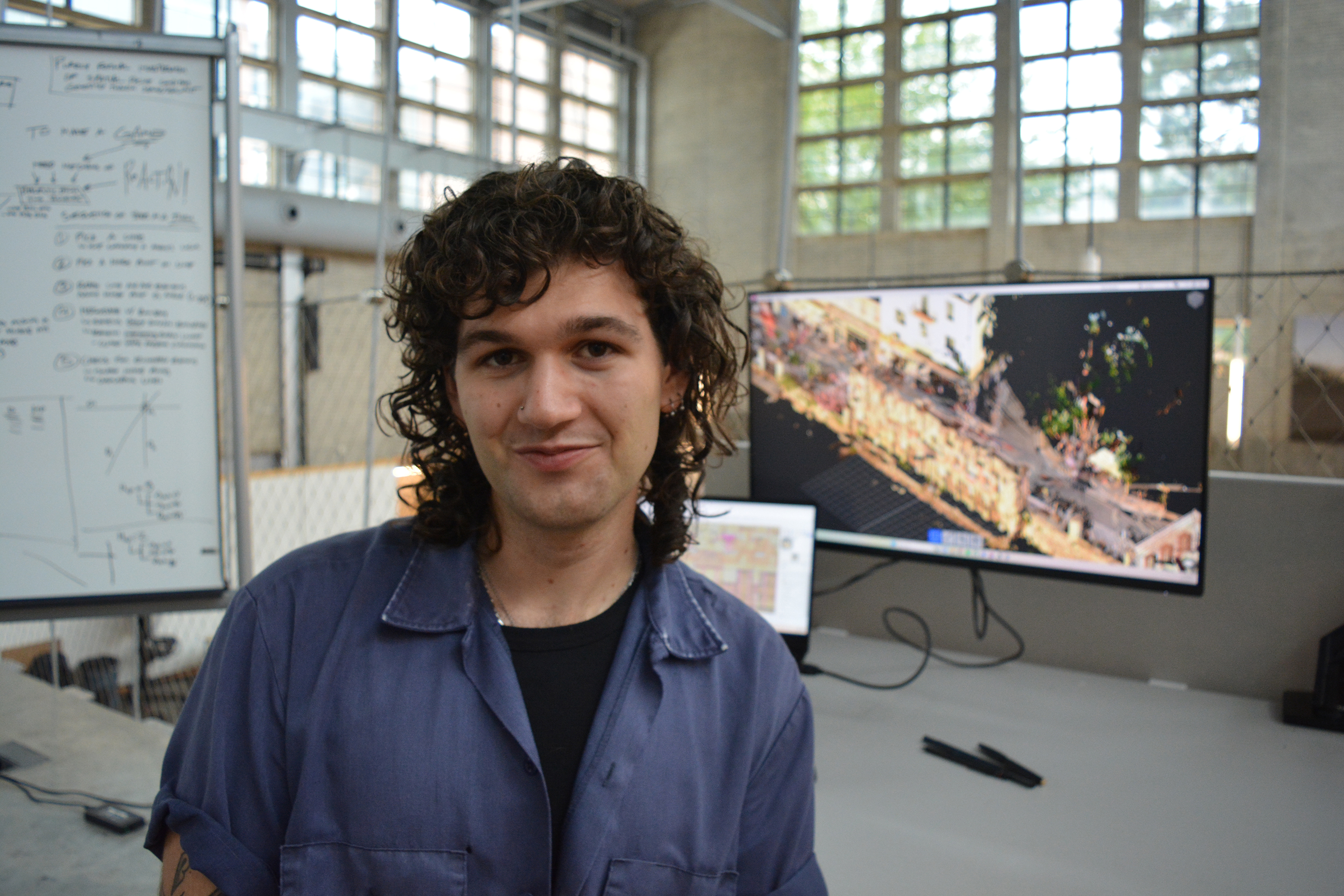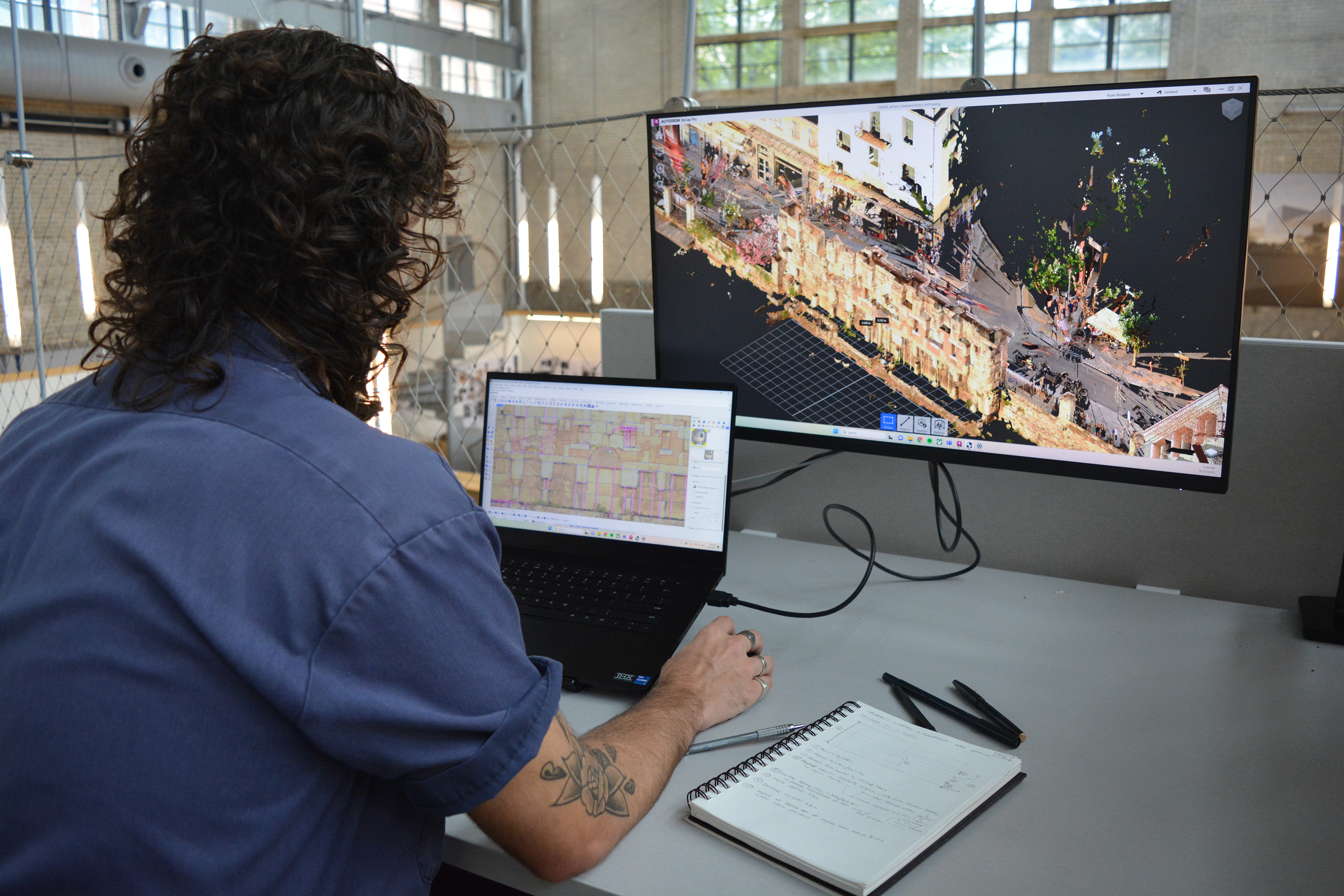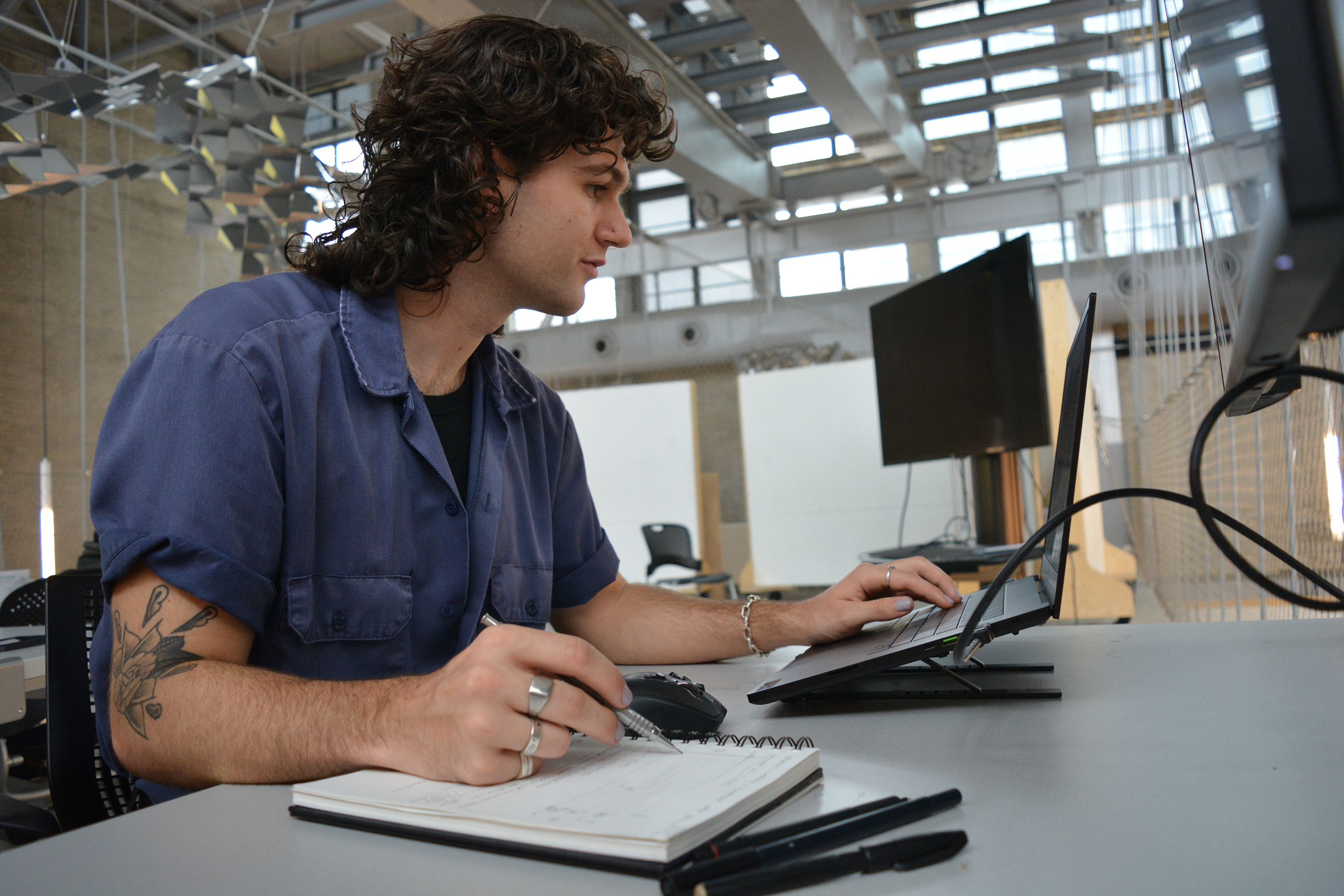Ryan Stoddard is a 4th-year Architecture major studying digital architectural reconstructions of Greek Ruins with Dr. Myrsini Mamoli.

How long have you been an undergraduate researcher at Georgia Tech?
I have been involved with Undergraduate Research at Georgia Tech for about two years. In that time, I’ve worked on three different projects – all in the School of Architecture.
How did you get involved with undergraduate research?
I first got involved with undergraduate research through working with Dr. Vernelle A. A. Noel to help plan and install her Design and Making in the Trinidad Carnival exhibit in Price Gilbert library last year. Engaging with her research into computation and craft while working on exhibition design with the library served to greatly expand my understanding of what research in architecture could entail, and it inspired me to pursue further research opportunities. I got involved with my current research through an independent study I conducted last summer while studying abroad in the School of Architecture’s Architectonics in Greece and Italy program. Studying and researching abroad was a great opportunity to explore different perspectives and disciplines in architecture than I had been exposed to on campus, and I’m excited to have the opportunity to explore the work further this semester!
What are you working on?
I’m working a series of digital architectural “reconstructions” of the ruins of Hadrian’s Library in Athens, Greece. Although the structural core of the library’s Eastern Wall is still standing, the architectural details have been lost; leaving unclear how the space looked and how it was used. Through referencing a 3D point cloud of the ruins that we scanned in Athens last year, I’m working to construct more accurate architectural drawings of the current state of preservation, as well as a foundational model which I can use to diagram several possible “reconstructions”. My aim is to use our new digital analysis tools to consider new hypotheses of how the wall’s architectural “skin” may have looked and functioned, evaluate the feasibility of previously proposed reconstructions, and to present those results in a clear graphic manner.

What is your favorite thing about research/researching?
I love that research presents a constant need to challenge my assumptions and explore new possibilities when working on a problem. As satisfying as it is to find favorable evidence in research, it can be even more exciting to find the answer somewhere I had not considered before. To me, the design process is all about pushing yourself to consider, adapt to, and work with new perspectives and methods: research presents a great framework to take that even further than in typical design work. I feel that my architecture coursework pushes me to be a more inquisitive researcher, and that the rigor and structure of research pushes me to be a more informed and open-minded designer.
What are your future plans and how has research influenced them?
Conducting such a variety of research work for most of my time at Georgia Tech has strongly influenced my perspective on my future plans. Right now I’m planning to pursue graduate education in architecture, and I hope to continue that learning in a career with a research focus: either in practice at a research-focused architecture firm, or in further academic work. My current research has also exposed me to new architecture-adjacent fields like historic preservation, and I’m considering that as a part of my future plans as well!

